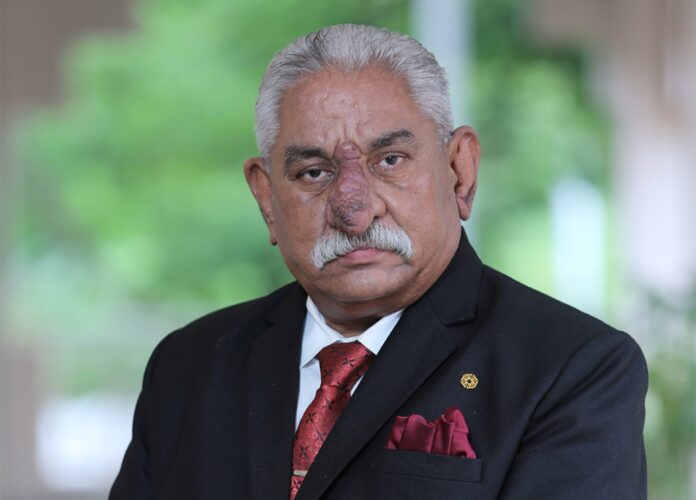Arun Kumar Sharma, Assistant Professor of Food & Beverage Service at the Institute of Hotel Management, Aurangabad (IHM-A) in Maharashtra, exemplifies a remarkable blend of hospitality, wine industry, and academic experience of over four decades. With nearly 25 years of honing his skills in Food and Beverage Operations at various Taj Hotels, Arun transitioned seamlessly into academia. For over 13 years, he has specialized in Wine and Food at IHM-A, which is recognized as the premier institute for professional hospitality needs, distinct from the Tata Group’s extensive network of 160 hotels, 25,000 employees, and 20,000 rooms.
Arun’s dedication earned him consecutive Best Faculty Awards in 2015, 2016, and 2017. His academic credentials are equally impressive, including a Diploma in Hotel Management, Catering Technology, and Applied Nutrition, a Bachelor of Science (Hospitality & Tourism), a Master of Science (Hospitality & Tourism), and a Level 2 Certification in Appreciation from the Wine & Spirit Education Trust. Rising through the ranks, he started as a Bartender, progressed to Restaurant Manager and Banquet Manager, and eventually became an Assistant Professor at IHM-A. This career trajectory reflects his unwavering aspiration to climb the professional ladder while leaving a legacy of excellence.
In a recent exchange with The Interview World, Arun Kumar Sharma delved into the intricacies of vinification (winemaking) and the art of serving it to discerning connoisseurs, showcasing his deep knowledge and passion for the subject.
Q: What are the most suitable geographical regions in India for viticulture, considering factors such as climate, soil type, altitude, and water availability?
A: India’s commercial wine grape production is a young industry that only emerged in the 1980s, placing it in its infancy compared to Germany’s 2,000-year-old tradition. Of the vast 123,000 acres dedicated to vineyards in India, wine production goes on in a mere 1-2% (or 1,230 – 2,460 acres). Determined to change this paradigm, Sham Chougule, owner of India’s largest wine producer Château Indage, spearheaded the creation of a wine festival. Historically, India boasted five major wine-producing regions: Nashik, Pune, Bangalore, Hampi Hills, and Bijapur, including Northern Karnataka. However, wine grape cultivation has recently flourished, expanding to states like Madhya Pradesh and Jammu & Kashmir.
Q: What are the top grape varieties cultivated for commercial purposes in India?
A: The varieties of grapes include those that ripen early in the season, early to mid-season, mid to late season, and late in the season. Your choice will depend on your region and personal preference. Grape plants have an economic life of up to 13-16 years and take 3-4 years to bear fruit. Among these varieties, Thompson Seedless dominates, accounting for 55% of the grapes grown in India, followed by Bangalore Blue at 15%, with Anab-e-Shahi and Dilkhush also contributing 15% each.
Q: What are the potential health benefits and risks associated with moderate wine consumption?
A: Drinking wine responsibly offers a multitude of benefits for your health. The antioxidants in wine lower bad cholesterol levels and promote heart health. Wine also helps regulate blood sugar, reducing the risk of diabetes. Moreover, its compounds can lower the risk of certain cancers and help treat the common cold. Drinking wine can also enhance cognitive functions, keeping your memory sharp, and contribute to weight management by aiding in maintaining a slim physique. Most wines contain up to 14% alcohol, safe to consume in moderation, making wine a beneficial addition to a balanced diet when enjoyed responsibly.
Q: How developed is the wine tourism industry in India?
A: Nashik boasts 70 operational wineries, attracting visitors from across the country and abroad. These wineries offer comprehensive tours of their vineyards and winemaking units, enticing tourists to explore Indian wine brands. Visitors often choose Indian wines to satisfy the curiosity of eager locals back home. For just Rs. 350, they can sample at least six varieties, making the experience a hit among all age groups.
Q: How much wine, on average, does each person in India consume?
A: Wine consumption in India remains negligible compared to European countries. For instance, while France boasts a per capita wine consumption of 6 liters per annum, India’s consumption is a mere 5 milliliters—barely a spoonful. However, awareness of wine’s benefits is growing among Indians. Interestingly, India has begun exporting wine to countries like Japan, signaling a shift in the industry.



